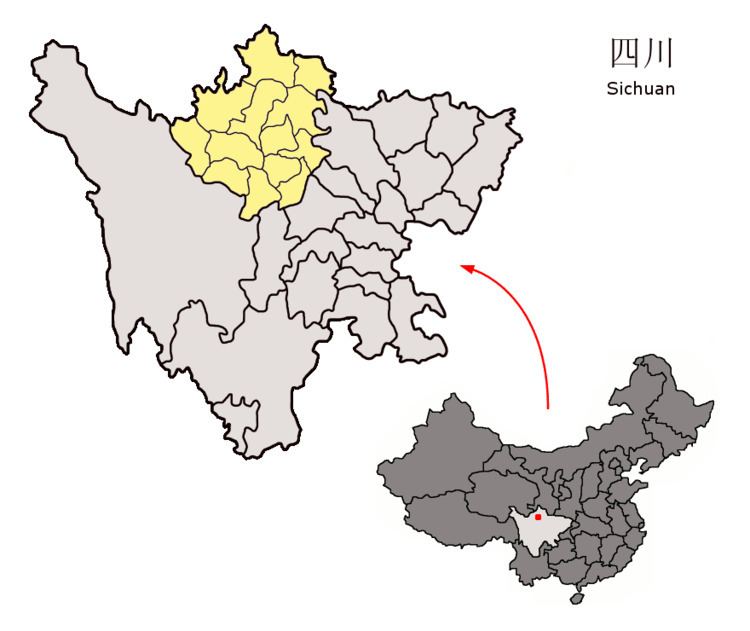 | ||
In Sichuan province, in an area incorporating the traditional Tibetan areas Kham and Amdo, Tibetan monks and police clashed in riots on 16 March in Ngawa county after the monks staged a protest. It formed part of the 2008 Tibetan unrest and was one of two major events to happen in Sichuan during 2008, the other being the 2008 Sichuan earthquake in May 2008.
Contents
Events
On 16 March, Tibetan monks staged a protest against its allegedly harsh treatment by the Chinese government. The word got out and the police became involved. The monks and police clashed, killing at least one policeman, and setting fire to three or four police vans. The India-based Tibetan Center for Human Rights and Democracy claimed at least seven people were shot dead; however the claim could not be independently confirmed.
Unverified claims
There are claims that police shot between 13 and 30 protesters after a police station was set on fire, however reports of deaths are impossible to verify because of the restrictions on journalists.
Crackdown on violence
Authorities and security forces in the city of Chengdu, the capital of Sichuan, have locked down a Tibetan neighborhood. The neighborhood is located near the Southwest University for Nationalities and the Wu Hou Temple. The crackdown comes amid unconfirmed reports of Tibetan protests in that section of Chengdu and a stabbing attack on a Han Chinese man by a Tibetan earlier in the week. Cars and other vehicles are not allowed to drive through the neighborhood, which has a large police presence. The Foreign Correspondents Club of China has reported that Chinese authorities have hindered efforts to report from the bases in Chengdu about Tibetan areas of the province.
Arrests
On 21, 27 March nuns of the Kirti Monastery in Ngawa county were arrested by Chinese police forces. The information was confirmed by the Swiss newspaper Neue Zürcher Zeitung after phonecalls into the region with locals. Troops also blocked roads in nearby Sertar. The London-based Free Tibet Campaign reported that troops had been sent to the county after residents blew up a bridge near the village of Gudu. Arrests have also been reported from Sertar after security forces cracked down on protests.
Further clashes
On 25 March, Chinese state media citing local authorities reported that one police officer was killed as fresh protests erupted in the Tibetan part of Sichuan. The Xinhua news agency said police were "forced to fire warning shots" and had "dispersed the lawless mobsters." The Tibetan Centre for Human Rights and Democracy reported that one Tibetan protester had been shot dead by Chinese Police and another was critically injured.
The suicide by two monks in Amdo on 27 and 30 March has been reported by the Tibetan Center for Human Rights and Democracy as an act of freeing from oppression. Independent verification is however outstanding.
On 3 April new violence broke out in Sichuan as various sources report. According to Xinhua News Agency at least one government official has been seriously injured. An overseas Tibet activist group said eight people had been killed in the incident. It said police opened fire on hundreds of Buddhist monks and lay people who marched on local government offices to demand the release of two monks detained for possessing photographs of the Dalai Lama. Unidentified eyewitnesses told Radio Free Asia's Tibetan agency that 15 people had been killed in the incident.
